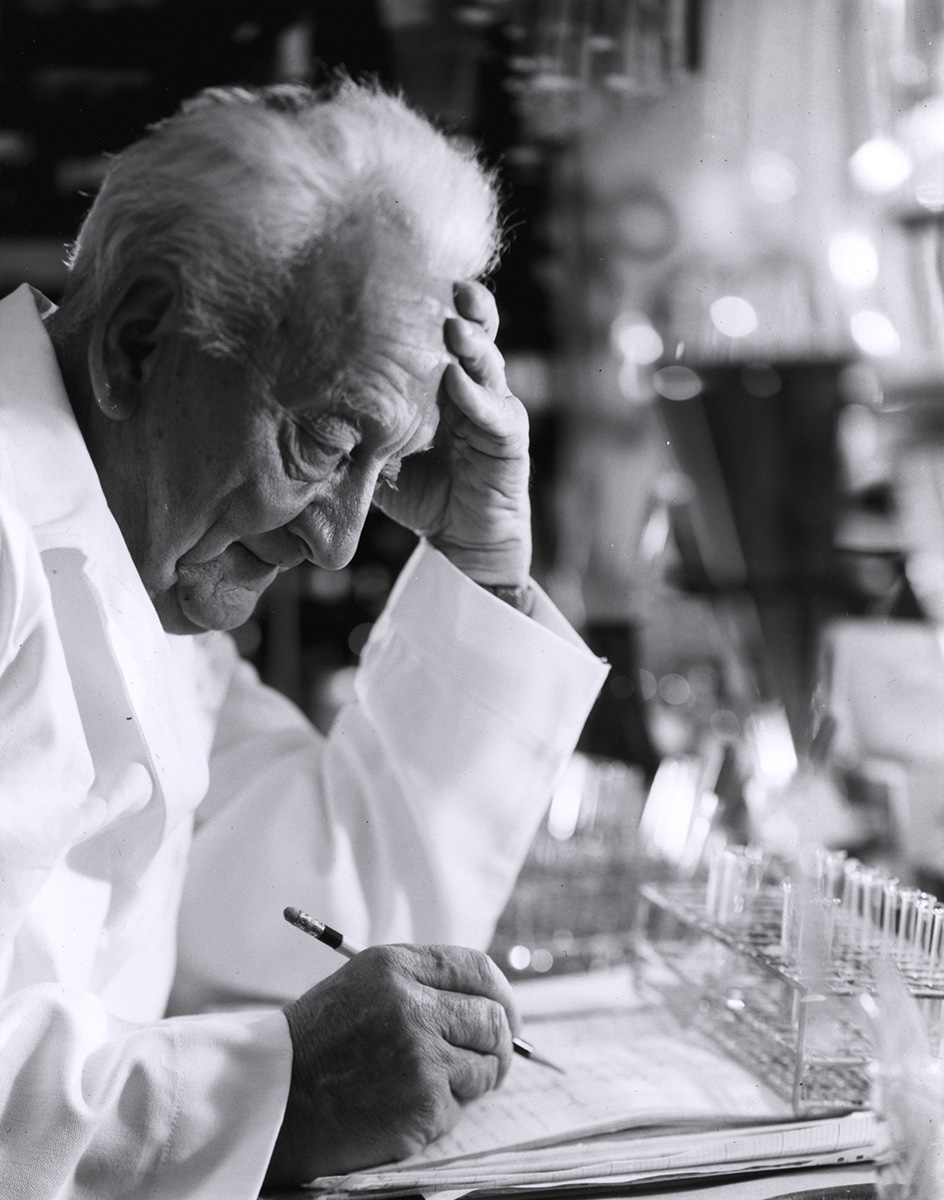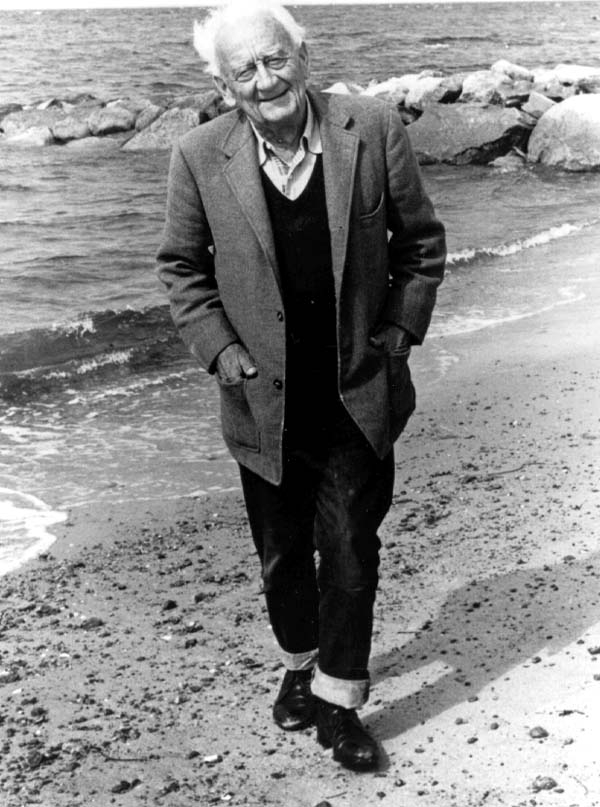Albert Szent-Györgyi
“Discovery consists of seeing what everybody has seen and thinking what nobody has thought.” —Szent-Györgyi
In 1947, after WWII and the Soviet occupation of Hungary, Albert Szent-Györgyi moved to the MBL. He became one of the first year-round scientists and established the Institute for Muscle Research.
Szent-Györgyi had received a Nobel Prize in 1937 for his work with vitamin C. The following year, he and members of his lab discovered and eventually separated the previously elusive protein actin from preparations of muscle myosin.
Szent-Györgyi and his team also described the role of adenosine triphosphate (ATP) as the energy source for muscle contraction and cellular respiration. This led to his pioneering work using electron microscopy to analyze muscle tissue.

“As for myself, I like only basic problems, and could characterize my own research by telling you that, when I settled in Woods Hole and took up fishing, I always used an enormous hook. I was convinced that I would catch nothing anyway, and I thought it much more exciting not to catch a big fish than not to catch a small one.” —Szent-Györgyi


1. Original Repository. National Library of Medicine. Prints and Photographs Collection. 11920. Free Text. This image may also be accessed from the Images from the History of Medicine (IHM).. URL. http://www.nlm.nih.gov/hmd/ihm/. IHM Order Number. B024345. Periodical. [Albert Szent-Györgyi working at his lab bench, Woods Hole, Massachusetts]. Modern Medicine, (30 August 1965): Cover. Photographic Print. 1 Image. Modern Medicine.
2. Albert Szent-Györgyi on beach. Courtesy of WHOI Archives. http://dlaweb.whoi.edu/sdimages/970819/6e67c198.jpg.
3. Photograph of Szent-Györgyi's hook courtesy of Matthew Person.